As The Fog Clears
Header Image: Eastern Phoebe Eyes Bagworm Moth
We seem to relish foggy days. For one, as Gini noted on this day, it just seems so quiet. The stillness of an early morning on the bank of a lake blanketed in gray with sight and sound limited heightens the senses. More importantly, we know clear skies lurk just above the mist and the natural world will soon be going about the business of surviving another day. As will we.
This particular visit to Tenoroc Fish Management Area took place in mid-December. Morning temperatures were mild but made to seem cooler by the fog. Not too long after sunrise, we were basking in the warm Florida sun under bright blue skies.
Small birds were active but fairly silent while the fog clung to the earth. Visibility improved slowly and the morning commuter flocks could navigate from roosts to feeding areas. Scores of White Ibis, Double-crested Cormorant and Anhinga crisscrossed the patchwork of lakes. A pair of Black-bellied Whistling-Ducks whistled overhead. A Great Blue Heron materialized from the fog and flapped his way onto a cypress tree branch. A distant screech from a Red-shouldered Hawk seemed to signal the official start of the day.
We progressed slowly from one favorite spot to another. Lingering along a trail or at a boat ramp or fence row provided an incredible diversity of our three main goals: birds, blooms and bugs. Migratory birds were sprinkled throughout our morning which increased the pleasure provided by our normal resident population. At this time of year we don’t encounter as many insects as during warmer months, but we still came across butterflies, moths, dragonflies and small creepies and crawlies all enjoying the relative winter warmth. A few flowers brightened up the landscape.
One day I will concentrate on including fewer images and creating shorter blog posts. This is not that day.
The pretty panorama of Picnic Lake was mostly obscured by the morning fog.
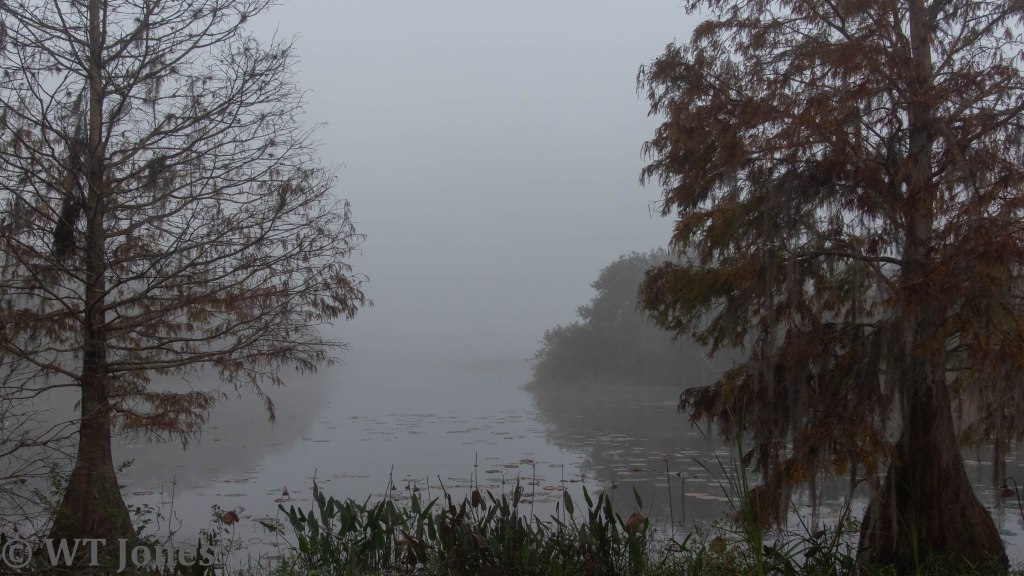
Bright yellow blooms in the water are but a memory. American Lotus (Nelumbo lutea) in winter.

The strength of the sun will soon overcome the damp gray blanket hugging the earth.

A positive result of the delayed sunrise is that the Moonflowers (Ipomoea alba) remain open longer. This bloom measured almost eight inches in diameter.

With its bright yellow eyes, a Common Grackle just chased away my opportunity to photograph our first observed migratory American Robin of this season. Sigh.
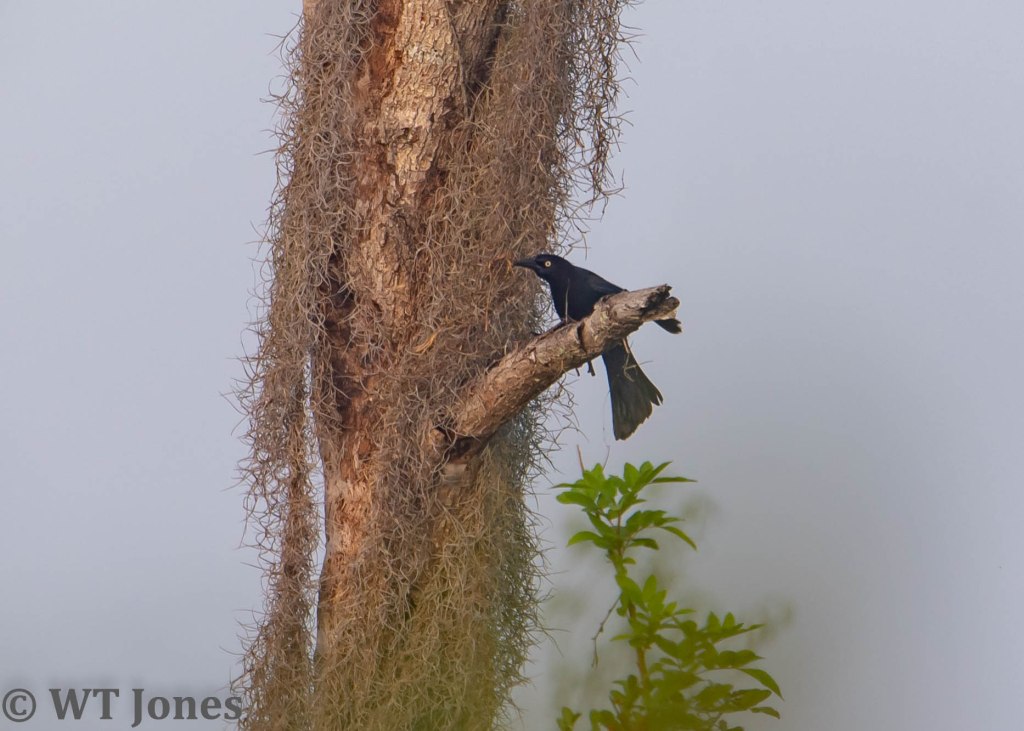
Skulking in the lower portion of the brush is another winter migrant, the Swamp Sparrow.

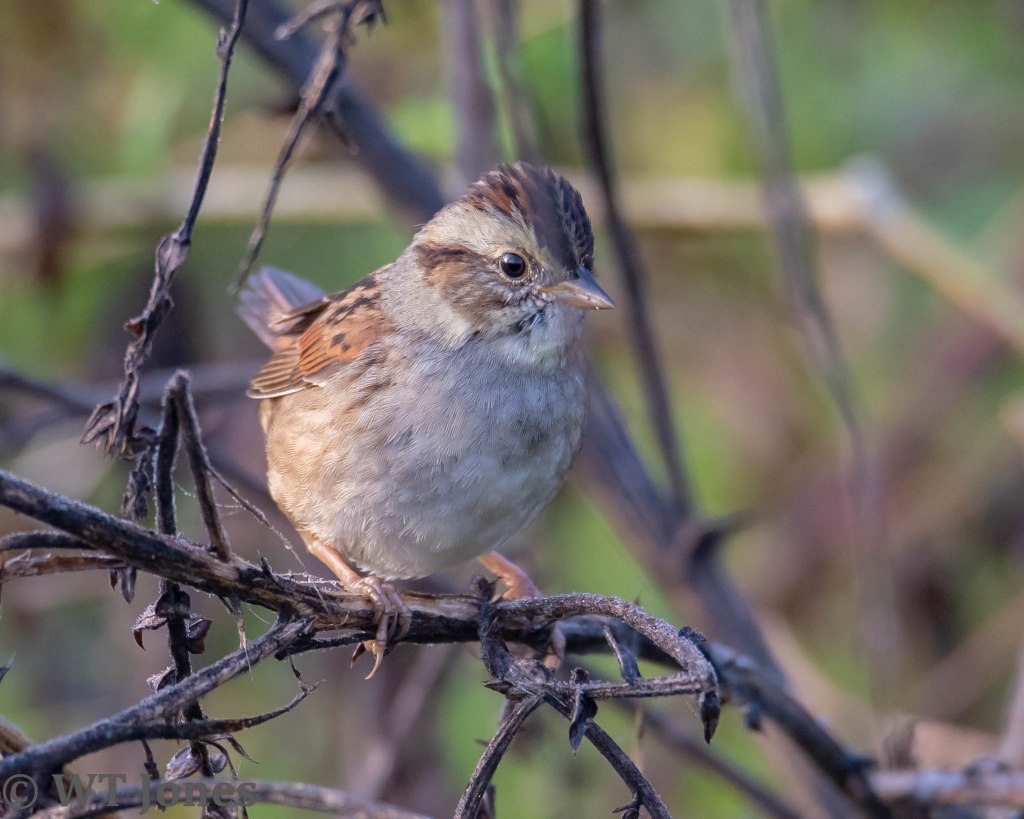
I was hoping to change to the macro lens for a detailed image of this spectacular Arrowhead Spider (Verrucosa arenata), but she was much quicker than me. Two clicks with the big lens and she disappeared.
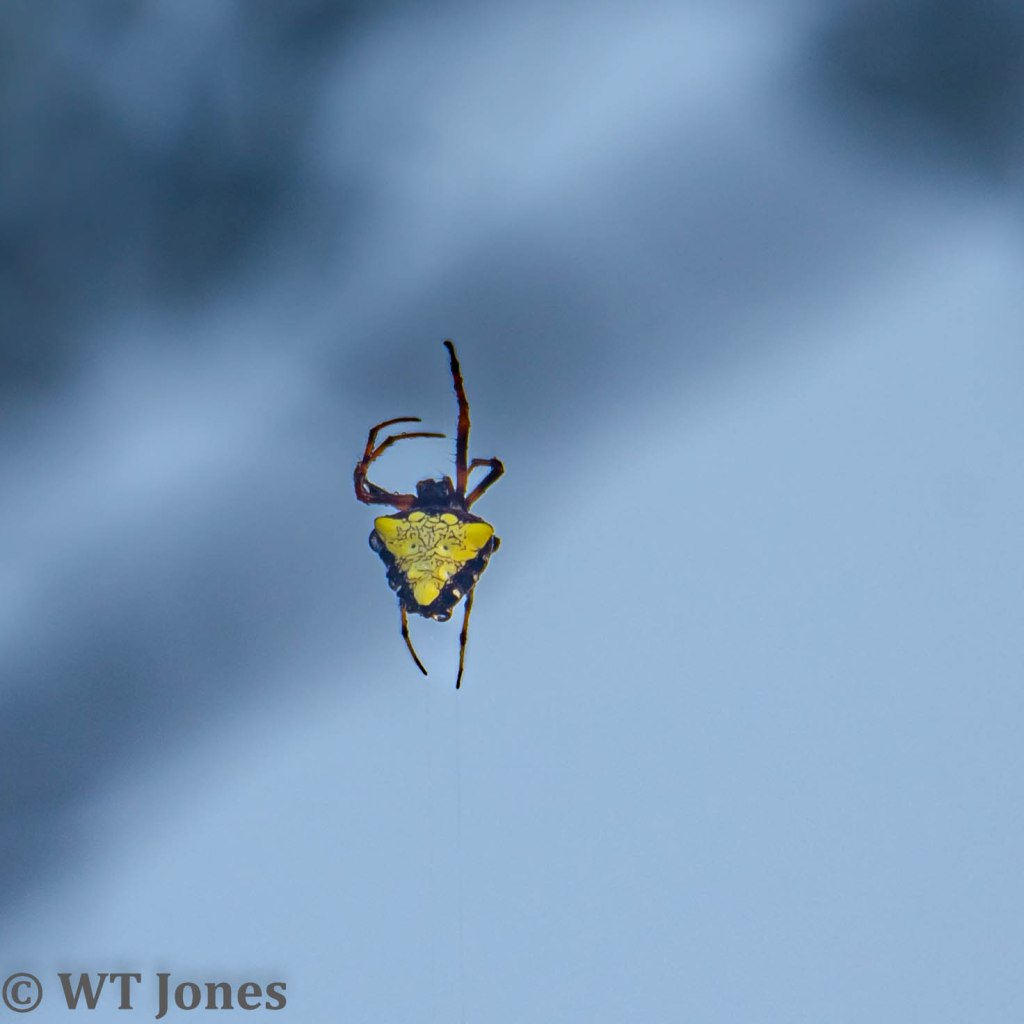
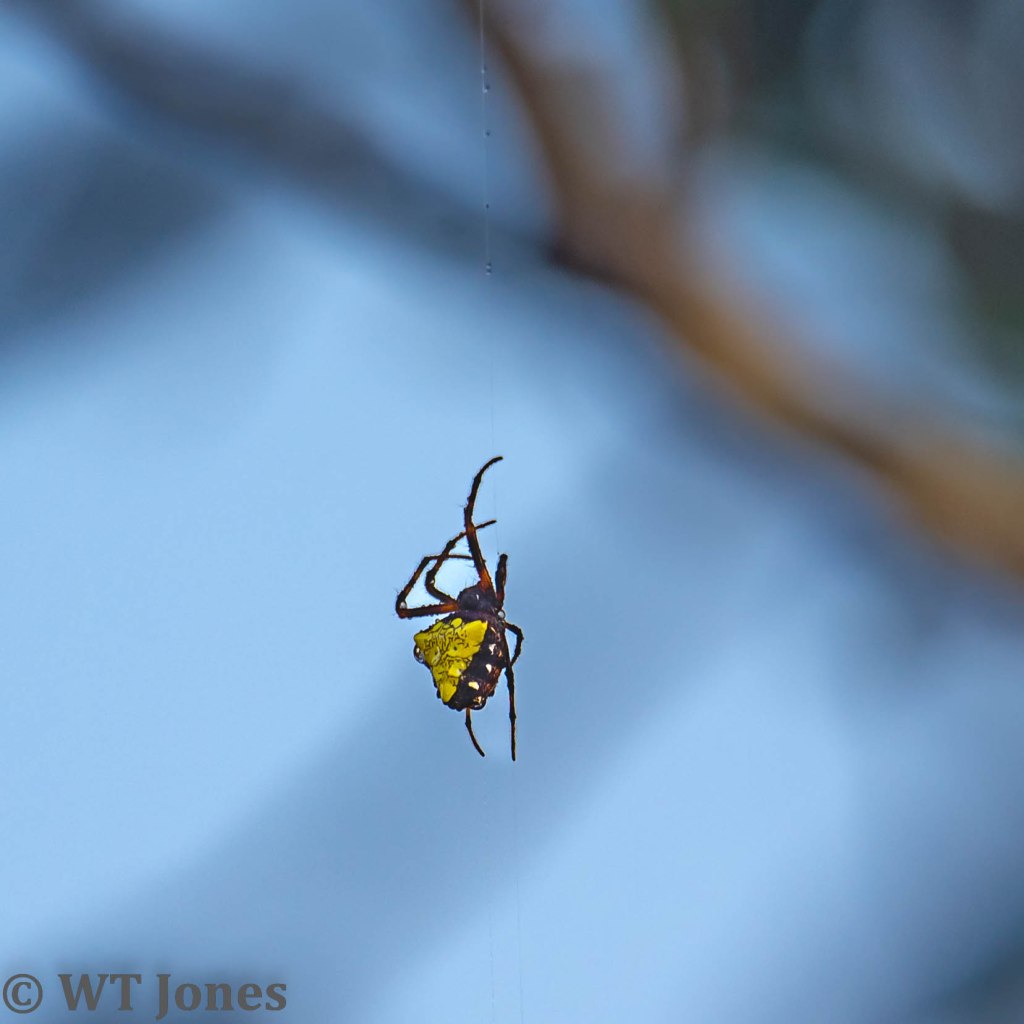
One of our (many) favorite winter visitors is the Northern Harrier. Their distinct owl-like face and low, lilting flight as they hunt over a marsh or field make them quite unique. This one was uncharacteristically perched in a large field. Based on the fairly dark plumage, especially of the head, this is likely an immature bird. I thought it had just captured breakfast, but after 20 minutes it took flight with no evidence of prey.


Our presence may have been detected. This young Red-tailed Hawk wouldn’t stop squawking about us. More like “Tattle-tale” Hawk.
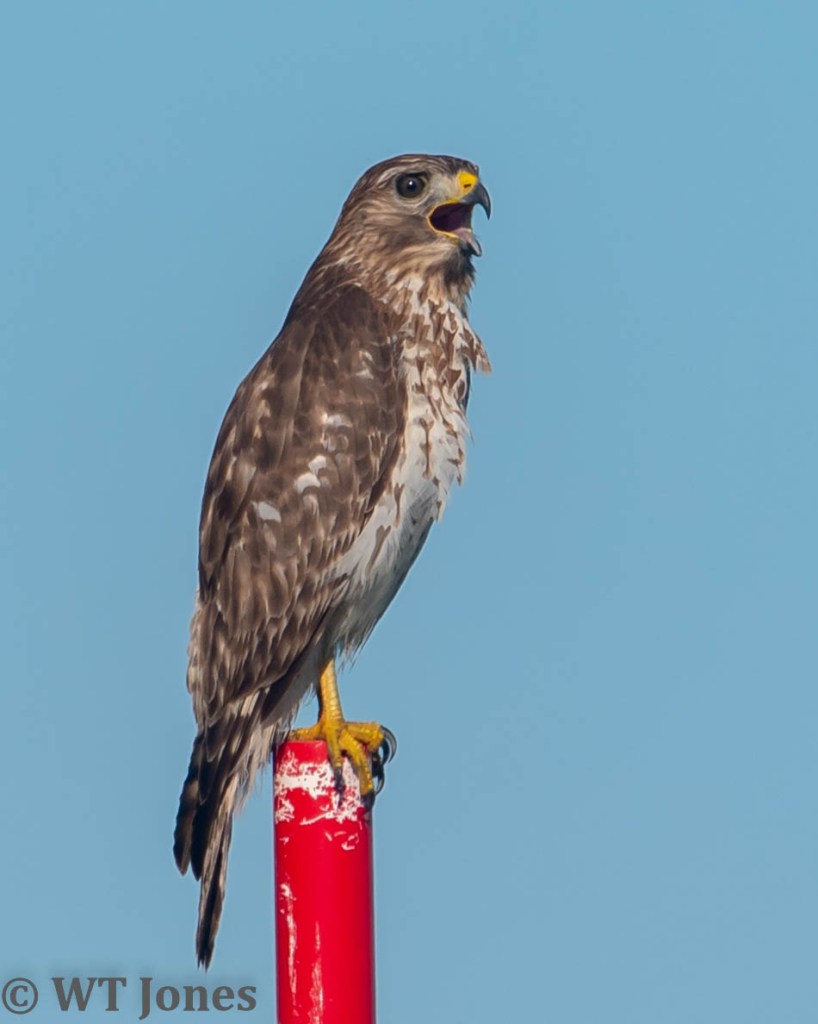
Winter dragon. Like the Harrier above, this male Hyacinth Glider (Miathyria marcella) is normally airborne and we’re always surprised to find one sitting still. Dozens of these were active over the same field where we found the Harrier and Hawk.
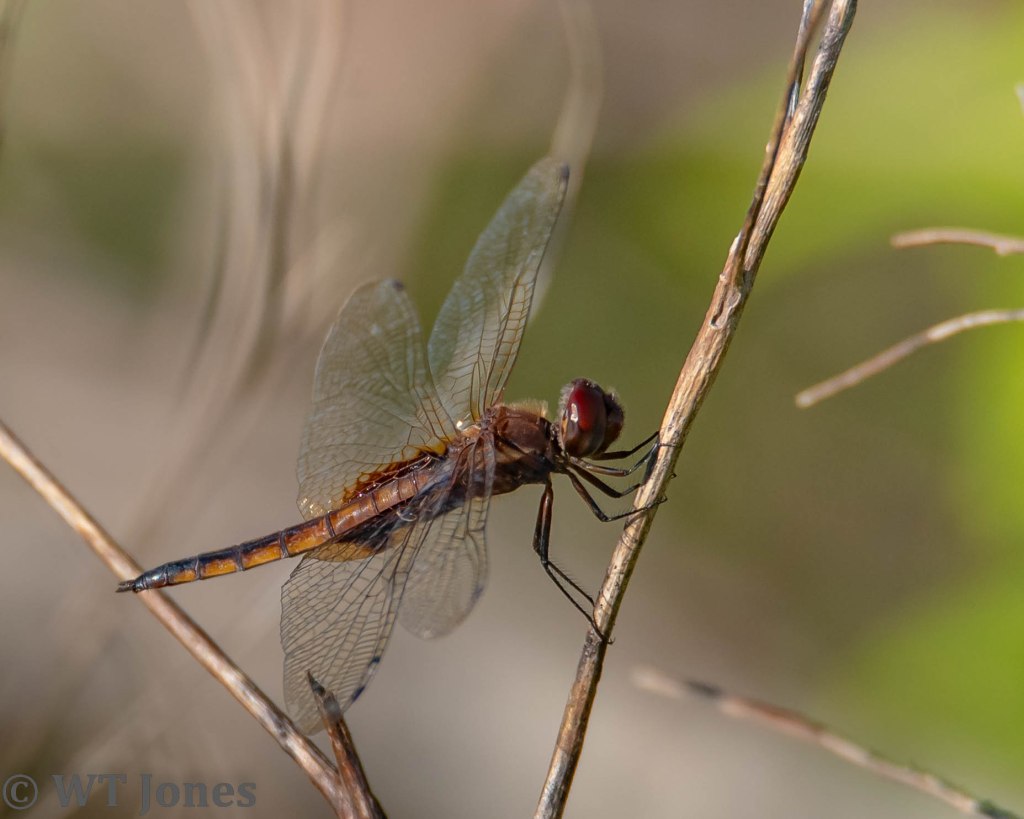
Yellow-rumped Warblers are among our most common winter migrant songbirds. The majority of these handsome birds fly on to South America but thousands remain in the area until spring.
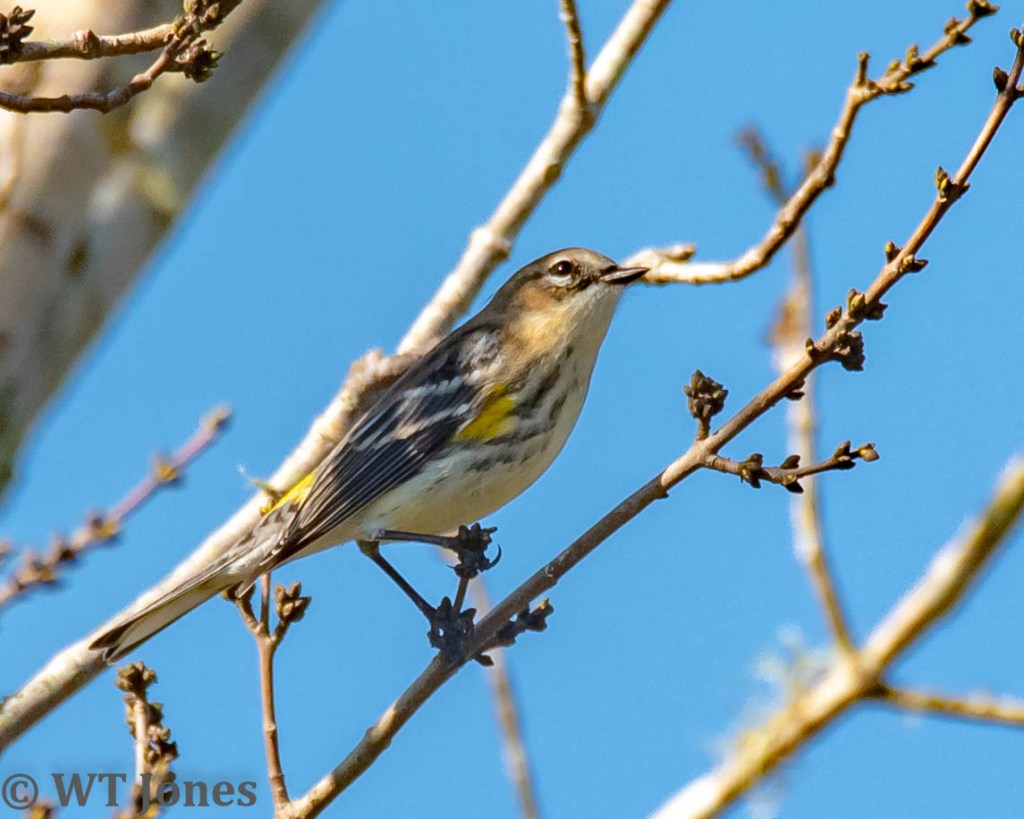
Gini thinks too much coffee may be the reason a Ruby-crowned Kinglet seems to never hold still. Fidgety, constantly flexing its little wings, hopping from one twig to another. These are considered “short-distance” migrants since in the fall they move from far-north breeding grounds to the southern part of North America and typically no further. We appreciate them entertaining us all winter!

Speaking of fidgety and entertaining. Meet the House Wren. These little brown jobs are all over the place in winter! They may be small but they are intensely aggressive. They have a surprisingly loud and beautiful song.
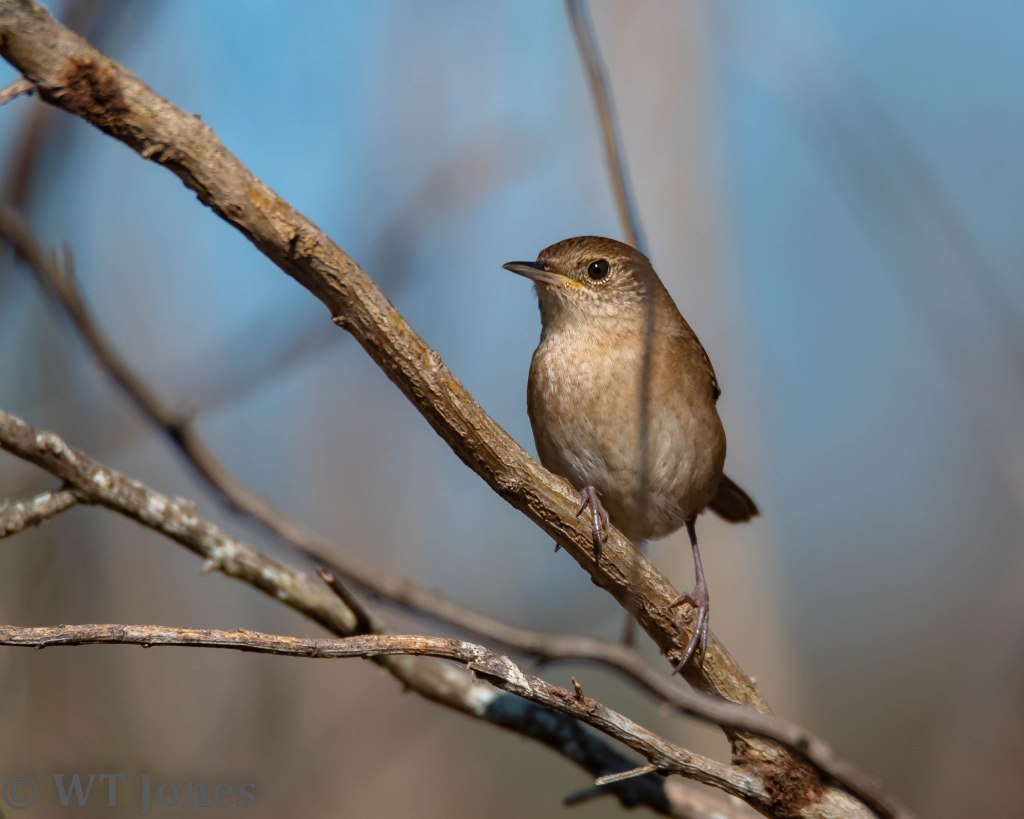
More tourists. Savannah Sparrows are easily identified (for a sparrow) by the striped breast, distinct face pattern and usually a bit of yellow over the eye. This is our most abundant migratory sparrow.

It may not be as brightly colored as some butterflies, but we think the Variegated Fritillary (Euptoieta claudia) is stunningly beautiful!

With no trace of fog remaining, an Eastern Bluebird has plumage which is nearly a match for the morning’s recently revealed bright sky.
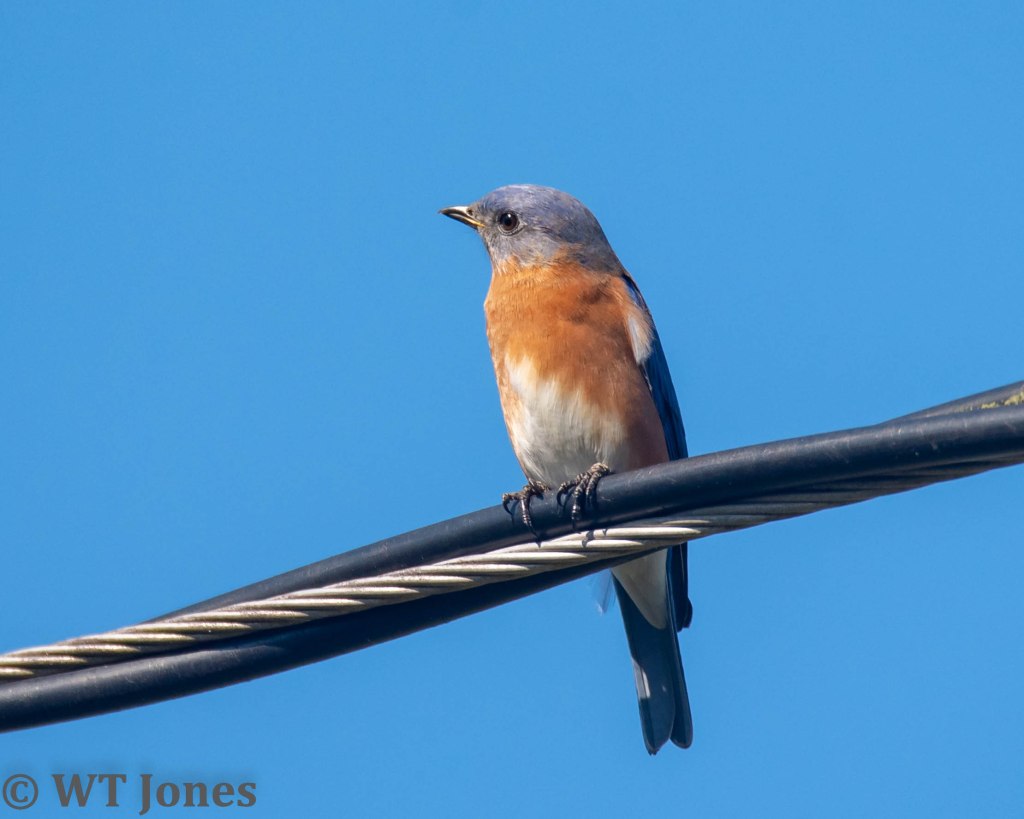
More blue revealed! This time in the eyes of a White Ibis as it probes the shallows for breakfast.

Our imagination thinks the flowers are grateful for the sun’s rays and open a little wider in thanks. This Climbing Aster (Symphyotrichum carolinianum) bloom is one of dozens adorning the bank of a lake.
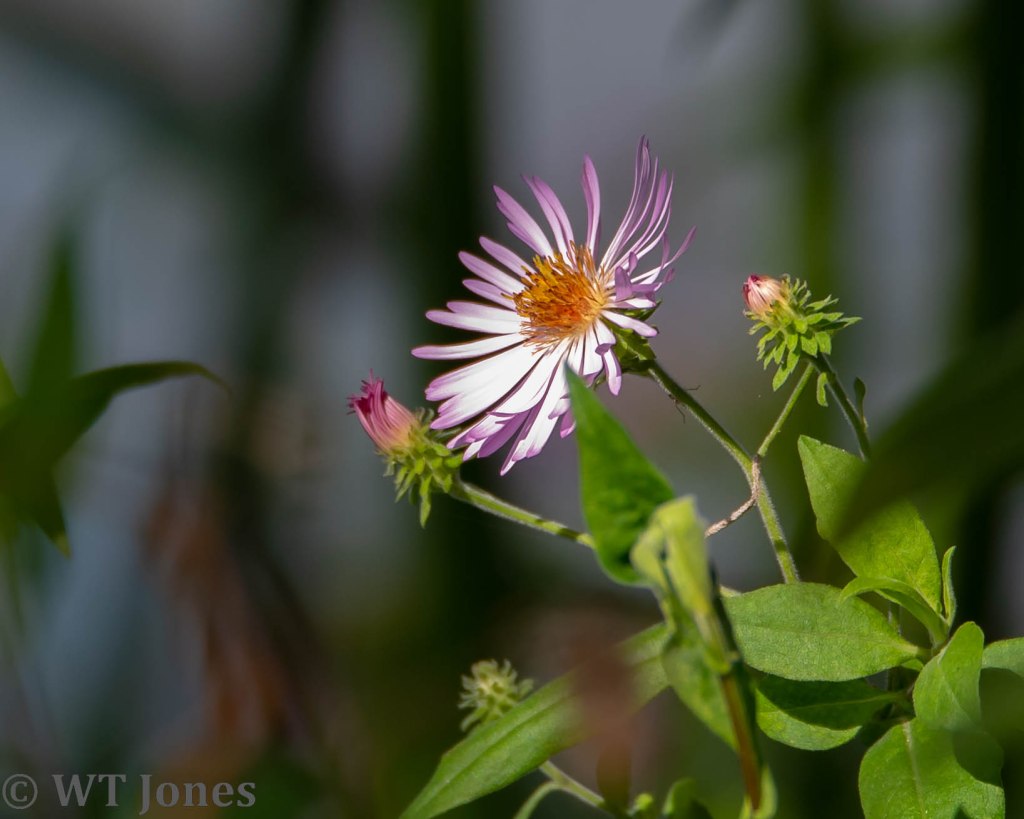
We began the day on the shore of a lake straining to see what might be in the distance. As the fog cleared, so did our vision and our spirits. Life can be like that. Gloom can restrict our sense of what is important. Eventually, barriers are overcome and all is right with the world.
Enjoy your search for a natural place and come back for a visit!
Another great collection of shots (for the record you can never have too many shots in a post ha). You managed to get a good look at the Swamp Sparrow – those things drive me absolutely nuts along with the Marsh Wren as they seem determined to keep at least one reed between my glass and them. Same goes for your Ruby shot – seems those things NEVER stop moving. Once again you introduced me to a new species of butter – the Variegated Fritillary is even prettier than the last one. Definitely enjoyed this post
LikeLike
Part of the lure of wildlife photography is the challenge of getting our subjects to pose properly. But if it was easy, we would probably stay home and watch teevee.
I need to make a better effort to include upper and lower wing views of the Variegated Fritillary. Underneath looks like a stained glass masterpiece. (Note to self: do better.)
Very good to hear you enjoyed the trip with us.
LikeLiked by 1 person
That moonflower is spectacularly beautiful and you were fortunate to have a day that allowed it to shine as it did into the morning. Your swamp sparrow is another fine portrait and I enjoyed the arrowhead spider seemingly floating in the air. I doubt that there is a clamor for you to shorten your posts. It might lessen your work but the pictures and dialogue are always enjoyable.
LikeLike
The “morning-glory on steroids” is definitely an early morning favorite.
The rusty wings of the furtive Swamp Sparrow sure help identify it from among the other “little brown jobs” flitting around low in the bushes.
Thanks for the gracious remarks about the blog. Thousands of cards and letters are begging me to be less verbose. Oh – wait. Those are from my family. Something about talking during dinner and teevee shows.
LikeLiked by 1 person
I so enjoyed experiencing the hush of the foggy world, as well as the subsequent lifting of the veil and return of color and sound. And to marvel once again at how many colors and sounds there are to enjoy in your corner of the world.
LikeLike
Thank you, Tanja.
We do have a pretty marvelous corner here!
LikeLiked by 1 person
An excellent walk, and excellent photos. I agree with your other readers, I would not vote for shorter posts or fewer photos! There’s not one of these I would omit. A friend offered me Moonflower seeds years ago… and then moved to parts North, and we missed the connection. Really beautiful, ghost in the foggy morning. I’ll have to order some.
LikeLike
Thanks very much, Sam!
As you are aware from your adventures, it’s hard to resist sharing nature’s beauty. Not everyone has the opportunity to wander around in a Florida swamp or along the Texas Gulf coast.
The Morning Glory family seems to always have something – well – glorious for us to see.
LikeLiked by 1 person
I would love to see a Moonflower…I might have to get up earlier though! And the little triangle spider is interesting. I’ll be on the look out for one of those too. It’s just amazing no matter when you get out in nature. But did you see a pink elephant? heeheehee! Enjoy your weekend. It’s cold today!
LikeLike
You are right about how amazing nature is!
Just when you think you can’t possibly see anything different – up pops a pink elephant baby!
It’s not the cold I mind so much, it’s this WIND!
(Okay. I lied. I hate the cold with or without the wind.)
LikeLike
You got some great birds on that foggy day. I love walking around in the fog. Love the spider. I have never seen one of those.
LikeLike
Thank you, Dina.
Those misty mornings can be special. Hope to find more of those spiders!
LikeLike
Hi Wally. By strange coincidence, my bed-time reading a couple of nights ago was about Bagworm Moths (as featured in your beautiful header) – the like of which is not, to the best of my knowledge, found in UK.
That Arrowhead Spider is absolutely wonderful – I would love to see one.
I’m fully with you on the merits of that Variegated Fritillary.
Having to keep this response short as I’m still pretty fully occupied with domestic demands. My very best wishes to you and Gini. Stay safe – – – Richard
LikeLike
Thank you, Richard.
The Bagworm is pretty interesting and I hope to find an adult male some day.
We are fortunate to be able to see spiders and butterflies in the winter.
Your domestic demands come first! Give Lindsay our best.
LikeLike
Hello Wally and Gini. If only our rain and wind would clear as easily as your Florida fog.
It seems remarkable to me that you are able to get photographs of Northern Harriers, the species that we in the UK know as Hen Harrier. Therein lies the clue as to why Hen Harriers are perhaps THE most persecuted of our UK Raptors, they rather like to eat “chickens”, a colloquial name for small game birds. In our case those small game birds are Red Grouse, inhabitants of upland areas owned by the British aristocracy, a group of privileged people known colloquially as “knobs” or “nobs” or more usually as “nobheads”. An example might be Prince Harry, AKA Harry Hewitt.
The Arrowhead Spider is indeed worth many a photo while the kinglets have definitely worked that one out. It never ceases to amaze how our Goldcrests travel from across the North Sea from Scandinavia and Europe to then pass through England and end up in France. Can’t blame them for preferring the mildness of France to wet and windy Lancashire.
Enjoy your sunny days, my turn soon. Happy Weekend.
LikeLike
Before the taxonomists came around again, the Northern Harrier was the Marsh Harrier. It’s primary prey includes small mammals found in marshes and fields. Since they don’t mess around with game birds, their population is currently doing well.
I hope to encounter another Arrowhead Spider with a macro lens to see if I can get some detailed images. Fascinating creature!
It truly is amazing how birds, especially very small ones, successfully migrate such great distances and many times in very adverse conditions.
Take care. Our sun has faded as a cold front approaches. Shouldn’t last long. 🙂
LikeLike
“Commuter flocks” is just right, and brought a smile. I especially enjoyed the photos of the Arrowhead spider. In the second photo, the drops of dew on the silk are an especially nice addition. A couple of sites mentioned that the carapace also can be pink or white, but I much prefer the yellow. Does the “scribbling” on the triangle vary from spider to spider, or is it pretty much standard?
White-flower-loving me loves your Moonflower, and I smiled at the Yellow-rumped Warbler. I have one of those warblers that’s coming to my feeders on a regular basis now, and I’ve scared it out of my big Hawaiian Schefflera several times. The plant’s in a corner of the patio, so it’s a nice, secure location for an afternoon rest.
Last Saturday, I saw robins at the Brazoria refuge. No photos of them, but after I heard that distinctive call, it was easy to find them in the Chinese tallow trees. Despite their downsides, the birds do seem to love their seeds.
The bracts on the aster look familiar. I found an aster much like that in east Texas; if I can find the photo, I’ll do a comparison. I may have an ID, thanks to you again.
LikeLike
When I spied the spider, I sat down beside her. “What a lovely back with such artful scribbling.
Is it the same among all your relatives?”
She glared and declared: “Stop your quibbling!
It may be the same or maybe not, just don’t expect it on the fella-tives.”
Sorry about that. Not enough coffee yet. The obvious answer to your question is “I dunno”.
The Moonflower never fails to impress. Not just another morning glory! Your warbler may have found a good source of bugs as well as a nice napping spot.
Robins are now here in large numbers and sure can make a lot of noise! We love to see them as it means Cedar Waxwings will soon be here.
I tried to get a photo of the mass of the Climbing Aster but the sun and I had a disagreement about angles. It can produce some very impressive displays!
LikeLike
Please don’t rush to include fewer images and create shorter blog posts, Wally. I enjoy the length and number of photos just fine!
LikeLike
Woo-hoo! That’s (hang on, I’m getting the calculator) — “one”! Yay!
Get the ducks ready, Ed. Trip to MINWR is imminent.
LikeLike
I adore fog. Mystical, magical, marvellous. And yes, quiet and cool too.
Thank you for these glorious images. The Northern Harrier does indeed have a ‘touch of the owl’ about it – which is no bad thing.
LikeLike
The foggy days offer such a change to our normal conditions and it’s a lot of fun to see (or try to) things in a different perspective.
Gini and I hope all is well with you and the “meyous”!
LikeLike
You listed a collection of beauties. Thanks for sharing. The Fritillary is my favourite. I do love butterflies. 🦋
LikeLike
Thank you so much!
We just happen to love butterflies, too!
LikeLiked by 1 person